Cassini shared its final photos with us and they are amazing
Meteorologist/Science Writer
Monday, September 18, 2017, 2:23 PM - The Cassini mission at Saturn had already earned a reputation for sending back some of the most spectacular images in the solar system, but those taken in its final days may have nudged the bar a little higher.
In the early hours of Friday, September 15, we lost one of the great ones. NASA's Cassini spacecraft plunged into the upper layers of Saturn's atmosphere, bringing the mission to a close.
In the days leading up to that end, however, the spacecraft was still sending back reams of data and images, and NASA, as well as the space community, quickly went to work turning those images into works of digital art.
One last look at Titan
Titan, Saturn's largest moon, has remained a compelling target for study throughout the entire 13 year mission at the ringed planet, with Cassini pulling off a total of 127 flybys during that time.
On its very last approach to Titan, when it used the moon's gravity to slow down just enough to set it on its final course, Cassini took the opportunity to snap some parting images.
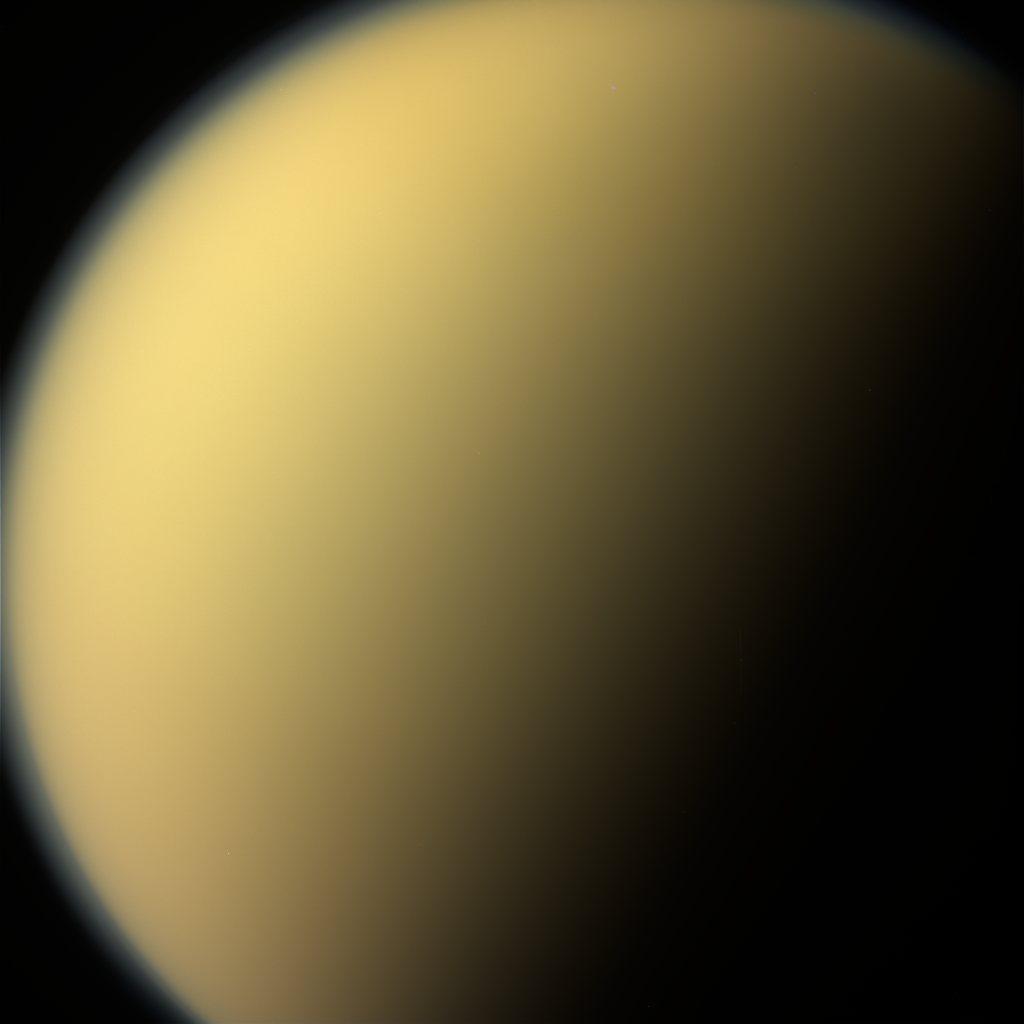
True colour image of Titan, snapped by Cassini on Sept 13, 2017. Credit: NASA/JPL-Caltech/Space Science Institute

An enhanced true colour image of Titan, with an image taken in the near-infrared added to the true colour view, to give us a look through the moon's hazy atmosphere. Credit: NASA/JPL-Caltech/Space Science Institute
Taken just two days before Cassini's plunge, these images contrast of views we had of Titan from before Cassini's arrival, via Voyager 1's flyby, and after Cassini's arrival.
Data gathered by the Huygens probe that landed on Titan shortly after Cassini's arrival, and the numerous pictures gathered of the surface by Cassini's cameras, have kept scientists busy for the duration of the mission, and they promise to keep them busy for some time to come.
Setting Enceladus
Cassini has been capturing images of Saturn's icy moon, Enceladus, for years, and it even flew straight through the moon's water vapour plumes, but this has to be one of the more unique views the spacecraft has captured.

Enceladus sets. Credit: NASA/JPL-Caltech/Space Science Institute
This animation, composed of roughly 50 sequential images from Cassini's cameras, shows the moon Enceladus setting beyond the limb of Saturn.
The Sun is out of frame, beyond the upper left of the images, brightly illuminating the crescent of Enceladus. The dark side of the moon gets, on the other hand, gets progressively brighter, frame by frame, due to "Saturn-shine" - light falling on the dark side after it is reflected from the upper cloud layers of the planet. The animation is in black and white due to the spacecraft simply capturing the sequence without switching between its camera filters (a switch that takes enough time to make the process impractical).
Not to disappoint, Cassini did capture red, green and blue filtered images just before Enceladus slipped out of view, so that we could see this:
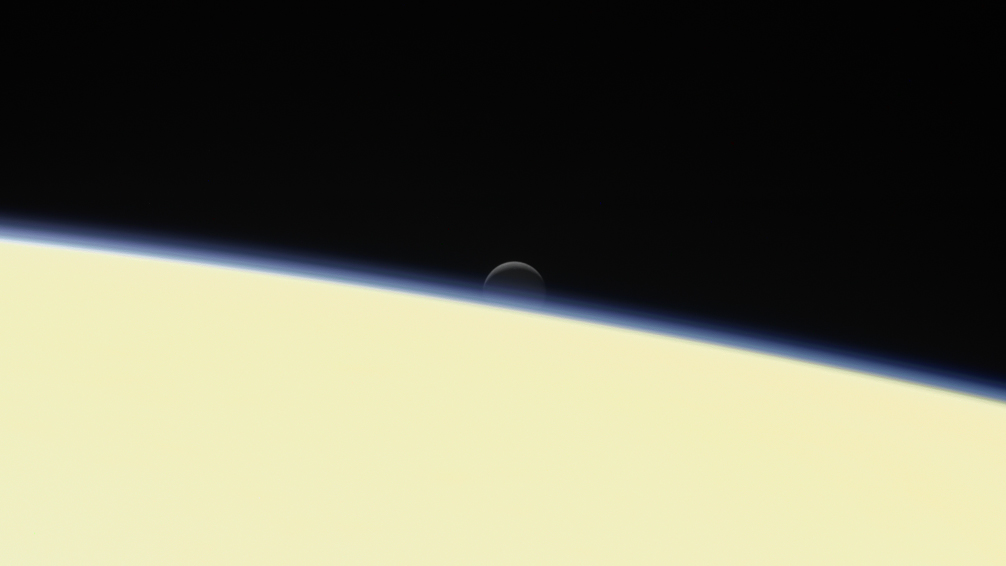
True-colour view of Enceladus setting beyond the limb of Saturn. Credit: NASA/JPL-Caltech/Space Science Institute
Not only does this catch the moon and the yellowish upper clouds of Saturn, but it also shows us the structure of Saturn's atmosphere, edge-on.
Where's Peggy?
Snapping images of Saturn's rings as it made its way over the northern hemisphere, Cassini gave us a parting view of the ring structure, but it was also on a search, for the somewhat illusive "Peggy".
First discovered in Cassini images from April of 2013, and reported on the NASA and JPL websites a year later, the pictures showed a bright clump at the edge of Saturn's A ring - a possible new moon forming around the planet!
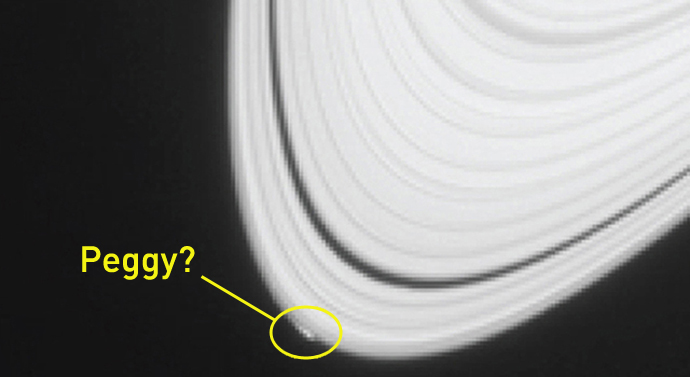
Credit: NASA/JPL-Caltech/Space Science Institute/Scott Sutherland
Imaging the rings in Cassini's final days did not turn up any definitive signs of Peggy, however.
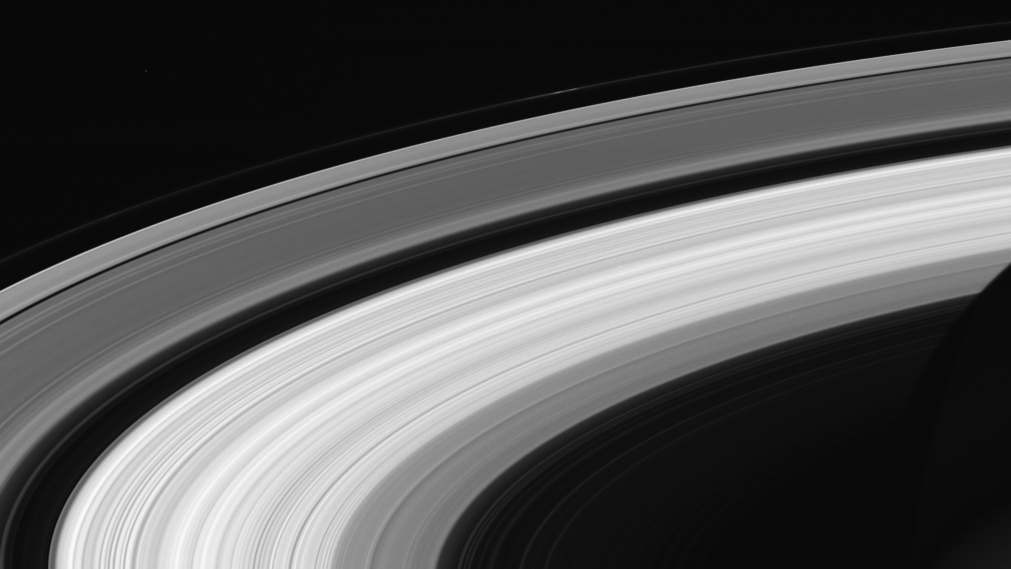
Credit: NASA/JPL-Caltech/Space Science Institute
According to Linda Spilker, Cassini Project Scientist at JPL, over the years since its discovery, it appears as though Peggy may have split into two objects, but there has not been another sign of that large, conspicuous clump that was spotted in 2013.
Perhaps when our next orbiter arrives at Saturn, we may see something there.
The Final Image
In the last minutes before its camera was shut down, Cassini pointed it at what would become the spacecraft's final resting place - the region of Saturn, roughly 10 degrees north of the equator, where it would make its final plunge.
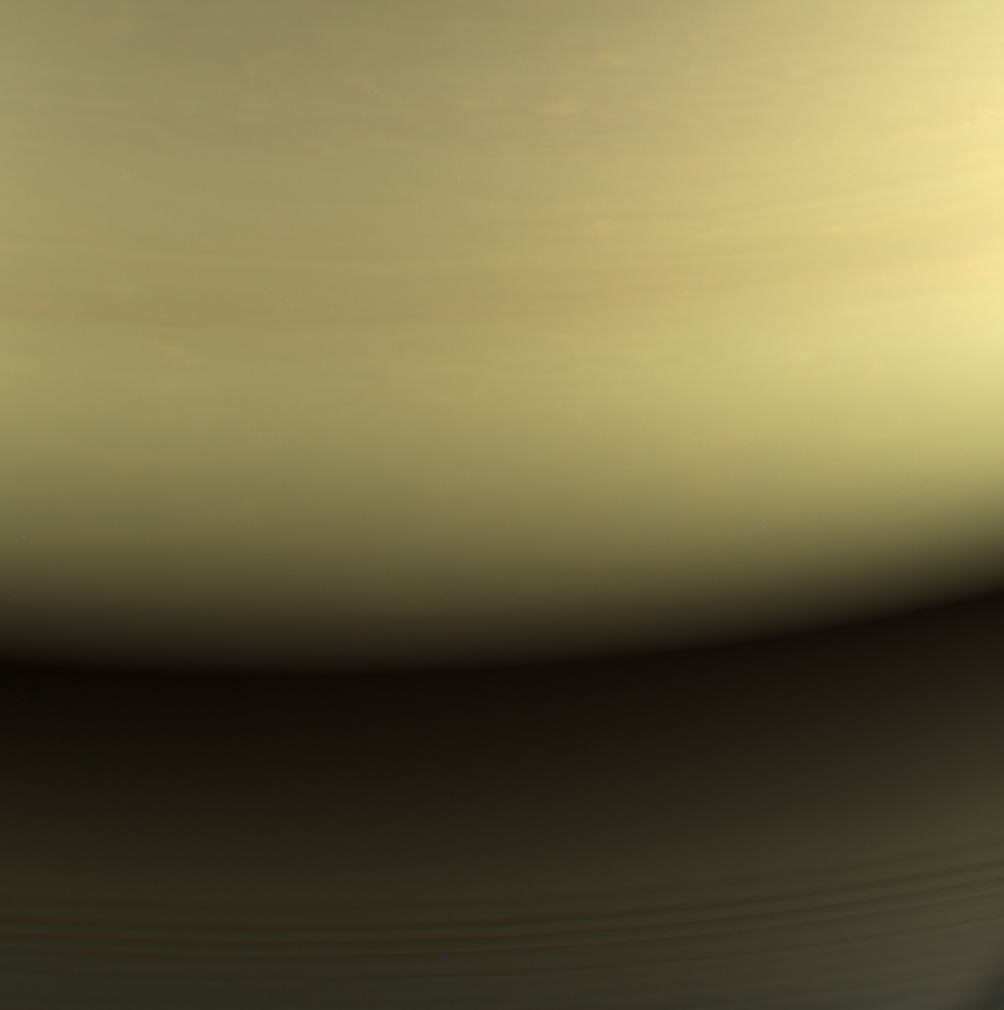
True colour image of Cassini's impact zone. Credit: NASA/JPL-Caltech/Space Science Institute
This image may not look like much, given the very subtle variations in Saturn's cloud patterns, but analyzing the heat output from the clouds brought the region into sharper focus.

False-colour mosaic image of Cassini's impact zone. Credit: NASA/JPL-Caltech/Space Science Institute
The ellipse highlighting a portion of the mosaic shows the exact location that Cassini dove into the clouds.
![]() CHECK OUT OUR OTHER CASSINI CONTENT:
CHECK OUT OUR OTHER CASSINI CONTENT:
NASA's Cassini plunges into Saturn. Here's how it happened
Cassini by the numbers: 13 years exploring Saturn
Watch HERE: NASA previews the last days before Cassini's end
Final days for Cassini: NASA's top discoveries from Saturn
See what NASA Cassini saw on its first two dives past Saturn
Possible food source for life detected in Enceladus' plumes
Cassini wows us with new pics of Saturn's north pole hexagon
What now?
The daily streams of images from Cassini have stopped, of course. We're simply going to have to deal with the fact that Saturn and its many moons are now reduced to tiny points of light in the sky, rather than the vibrant worlds we've seen over the past 13 years.
However, there is still 13 years worth of imagery to go through - 395,921 images total, which are available on the Cassini Raw Images website, right now. Peruse the collection, download ones you like, and you can even find ones taken with the red, green and blue filters, which can be combined and adjusted to make true colour images! Be sure to share them on social media, so everyone can see and remember this incredibly successful mission.
Source: NASA JPL



